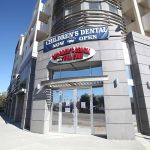What Technology Is Used During a Professional Dental Checkup?
When you go for a routine dental checkup, you might not realize just how much advanced technology is involved. Professional dental checkups have come a long way from the traditional examination with just a mirror and probe. With the rapid advancements in dental technology, dental professionals can now detect potential issues with greater accuracy and efficiency. In this article, we’ll explore the cutting-edge technologies used during a professional dental checkup, why they’re essential for oral health, and how they benefit you.
1. Digital X-Rays and Imaging
One of the most revolutionary advancements in modern dentistry is the use of digital X-rays. These devices allow dentists to take detailed images of your teeth and jaw, which can reveal problems that aren’t visible during a physical exam. Digital X-rays use much less radiation than traditional X-rays, making them safer for patients.
1.1 How Digital X-Rays Work
Digital X-rays work by sending a beam of X-rays through your body, which are absorbed by tissues in different amounts depending on their density. A digital sensor captures the image, which is then displayed on a computer screen in real-time. This technology enables dentists to zoom in, adjust contrast, and enhance the image for a better diagnosis.
1.2 Benefits of Digital X-Rays
- Quick Results: Unlike traditional film X-rays, digital X-rays provide immediate results, allowing for faster diagnosis and treatment planning.
- Lower Radiation Exposure: Digital X-rays require significantly less radiation, making them safer for patients, especially children and pregnant women.
- Enhanced Image Quality: The high resolution of digital images helps dentists detect even the smallest cavities or underlying dental issues.
2. Intraoral Cameras
Another incredible technological advancement in dentistry is the intraoral camera. This small, pen-sized device allows dentists to get a closer look inside your mouth and examine areas that might be hard to see with just the naked eye. It’s essentially a small video camera that provides live footage of your teeth, gums, and mouth to both the dentist and the patient.
2.1 How Intraoral Cameras Work
The dentist will gently move the intraoral camera around inside your mouth to capture clear, high-definition images. The images are displayed on a monitor, allowing the dentist to see and explain any potential issues. This real-time visual aid can be invaluable for both the patient and dentist in understanding the condition of the teeth and gums.
2.2 Benefits of Intraoral Cameras
- Improved Communication: Intraoral cameras provide a clear image that allows dentists to explain dental problems in a way that’s easy for patients to understand.
- Enhanced Diagnosis: The camera allows for better visibility, especially in hard-to-reach areas like the back of your mouth.
- Record Keeping: Images captured by the intraoral camera can be stored for future reference, allowing dentists to track changes in your oral health over time.
3. Laser Dentistry
Laser technology has also made significant strides in dentistry. Laser dentistry uses focused light energy to treat a variety of dental conditions. Whether it's for cavity treatment, gum reshaping, or removing damaged tissue, lasers offer a minimally invasive option that reduces discomfort and recovery time.
3.1 How Lasers Are Used in Dentistry
Lasers in dentistry work by emitting a concentrated beam of light that targets specific areas of the mouth. The laser energy interacts with the tissues in your mouth, either cutting or vaporizing the tissue, depending on the treatment. For example, laser technology can be used to remove tooth decay, reduce gum swelling, or even treat cold sores.
3.2 Benefits of Laser Dentistry
- Minimal Discomfort: Since lasers are minimally invasive, they cause less discomfort compared to traditional dental tools like drills.
- Reduced Bleeding: Lasers help to coagulate blood vessels, reducing bleeding during procedures.
- Faster Healing: The precision of lasers reduces the need for stitches and promotes faster healing after treatment.
4. Teeth Whitening Technology
For those looking to brighten their smiles, advanced teeth whitening technology can produce impressive results. Many professional dental offices use light-activated whitening systems, which accelerate the bleaching process, making it faster and more effective.
4.1 How Light-Activated Whitening Works
Light-activated teeth whitening involves applying a special gel to the teeth and then using a specialized light to enhance the whitening process. The light helps the gel to break down stains and discoloration, leaving you with a brighter smile in less time than traditional whitening treatments.
4.2 Benefits of Teeth Whitening Technology
- Quick Results: Light-activated whitening provides faster results, often within a single session.
- Long-lasting Effects: The results of professional whitening treatments can last much longer compared to over-the-counter options.
- Safe and Effective: Professional teeth whitening technologies are safe and performed under the supervision of experienced dental professionals, ensuring effective results.
5. How Technology Improves Your Dental Visit
Integrating technology into your dental visit doesn’t just make procedures faster and more efficient—it also enhances your experience as a patient. With digital X-rays, intraoral cameras, lasers, and teeth whitening technology, your dentist can offer higher-quality care, more accurate diagnoses, and better treatment outcomes.
5.1 Personal Experience and Technology
As a patient, I’ve personally experienced the benefits of these technologies. On my last visit, the dentist used an intraoral camera to show me exactly where a cavity was developing, which allowed us to take action before it became a bigger issue. Not only did it make the appointment feel more informative, but it also gave me confidence in the care I was receiving.
6. Exploring Advanced Dental Care
If you’re interested in learning more about advanced dental care and the latest technologies, consider visiting a dental clinic that incorporates cutting-edge technology. You can experience firsthand the benefits of these treatments, whether it’s for routine checkups or more specialized procedures. To explore more, visit Dentistry Toothtruth for more information on modern dental technologies and how they can improve your oral health.







 Canton Kids Dentistry: Dr. Farshid Nia5.0 (2 review)
Canton Kids Dentistry: Dr. Farshid Nia5.0 (2 review) Dr. John Snow D.D.S.4.0 (13 review)
Dr. John Snow D.D.S.4.0 (13 review) Sons & Daughters Orthodontics Riverside4.0 (198 review)
Sons & Daughters Orthodontics Riverside4.0 (198 review) Aesthetic Smile Designs5.0 (114 review)
Aesthetic Smile Designs5.0 (114 review) Vineetha Thomas, D.M.D.0.0 (0 review)
Vineetha Thomas, D.M.D.0.0 (0 review) Children's Dental FunZone - Pediatric Dentist & Orthodontist - West LA4.0 (1410 review)
Children's Dental FunZone - Pediatric Dentist & Orthodontist - West LA4.0 (1410 review) The Importance of Oral Health Education During Pregnancy for a Healthy Pregnancy
The Importance of Oral Health Education During Pregnancy for a Healthy Pregnancy Best Tips for Brushing Your Teeth Properly for Healthy Gums: Essential Techniques for Oral Health
Best Tips for Brushing Your Teeth Properly for Healthy Gums: Essential Techniques for Oral Health Why Skipping Dental Checkups Can Lead to Bigger Oral Health Problems
Why Skipping Dental Checkups Can Lead to Bigger Oral Health Problems Advantages of Porcelain Dental Restorations
Advantages of Porcelain Dental Restorations How Can Diabetes Cause Tooth and Gum Problems? Preventing and Managing Oral Health Issues
How Can Diabetes Cause Tooth and Gum Problems? Preventing and Managing Oral Health Issues Healthy Habits for Promoting Good Oral Health and Hygiene: Tips for a Healthy Smile
Healthy Habits for Promoting Good Oral Health and Hygiene: Tips for a Healthy Smile